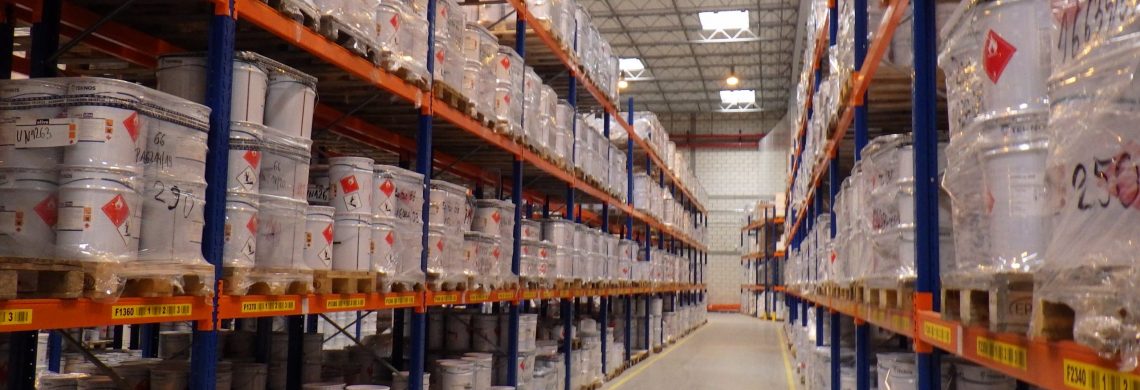Staying ahead of warehouse storage risks
23 july 2020

As in so many other areas of business and industry, when it comes to warehouse protection, there is no such thing as ‘one-size-fits-all’. Leszek Golachowski, a Riskonet partner in Poland, shares his insights and experience in adapting the protection of standard-purpose warehouses for non-standard storage.
In Poland most warehouse space has historically been developed on what I’d call a ‘speculative, or universal basis’. In other words, when a warehouse is designed, approved and constructed, the nature of the future tenant’s business is not known. Goods are stored in a standard manner, either in open racks, on pallets, or on the floor. In terms of fire protection, it’s all rather ‘market standard’. Warehouse buildings are usually 12-metres high, which is generally too high for most protection schemes used for non-typical goods and hazardous materials.
Non-typical goods
And nowadays the demand for non-standard occupancy and multi-level storage is growing. Our tenants here in Poland, for example, are increasingly storing non-typical goods and commodities that call for special protection. These include flammable and combustible liquids, aerosols, compressed gases and li-ion batteries, as well as hanging garments, expanded plastics, paper rolls and rubber tyres.
Take care!
To complicate matters even further, without even realising it some warehouses may fall under the ‘Seveso Directive’. This is based on EU legislation governing the safety of a location in which hazardous materials are manufactured, handled or stored. The description of this Directive can suggest that it only applies to the processing or use of these materials, and not to their storage. Warehouse operators that store even limited quantities of hazardous materials need to be careful; they can fall under the jurisdiction, and associated consequences, of such a directive sooner than they think.
Cost and data
Failing to adapt a general-purpose warehouse for the storage of non-standard or hazardous materials means that, theoretically, you cannot use the warehouse for its intended purpose. If you take the risk and do so anyway, you become non-compliant. But there is always a solution and it usually comes down to cost and available data. In Europe there are many regulations and datasheets governing the storage of hazardous substances and combustible materials. However, there is little compatibility with US standards, as well as a lack of quality data. That said, once you have all the necessary data it’s not that difficult to solve the problem. But it usually takes time because checking the relevant data for all stored items could mean having to do so for thousands of items.
“With the right interventions, preferably as early in the design phase as possible, a non-typical-use warehouse can still be made safe- and fit-for-purpose. ”
Leszek Golachowski
Riskonet Partner Poland
Different requirements
And then there is e-commerce. In today’s ‘order it online’ economy, a big user of warehouses are businesses in the e-commerce industry and these too have different requirements. If they only work at floor level and they are not dealing with non-typical or hazardous materials, a fire-protection scheme needn’t be a problem. It’s when the business realises that the warehouse is 12-metres high and that they are only using the floor level that it can get complicated. That’s typically when they start using multi-level mezzanines, often in combination with open racks, shelves and catwalks. This is because the fulfilment of online orders usually involves picking items from small boxes, as opposed to shifting fully loaded pallets.
Seek expert advice
Because multi-level mezzanines are not standard, regular warehouse sprinkler systems cannot recognise or cope with them. In helping our e-commerce clients and building owners we first of all explain that irrespective of how transparent the catwalks are, they cannot store in the building without the necessary protection. Then we check how the storage could be modified so that it still meets their needs while offering the required protection, such as sprinkler protection at the intermediate level that will not detract from their operations. Because multi-level mezzanines are not compatible with standard sprinklers, if you want to use them you must seek expert advice from someone other than the mezzanine producer, someone like Riskonet. And the earlier the better, preferably at the design or drawing-board phase. If we intervene early, cost can be kept to a minimum and usable storage space at a maximum.
Fit-for-purpose
In conclusion I’d like to stress that while the general-purpose development of warehouse space will probably remain the market standard in Poland, we want to raise awareness for the risks it exposes operators to. From a fire-protection perspective, general-purpose warehousing is not conducive to the storage of hazardous and non-typical commodities, or for complicated or high-risk manufacturing or handling operations. But with the right interventions, preferably as early in the design phase as possible, a non-typical-use warehouse can still be made safe- and fit-for-purpose. At Riskonet we have accumulated extensive experience in identifying and addressing issues like the ones I have outlined above. And despite varying degrees of difficulty, we always succeed in helping our clients, both owners and tenants.





